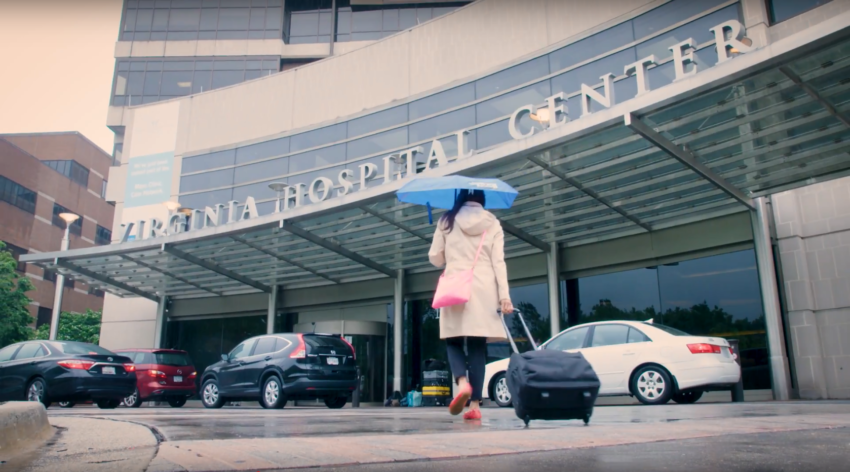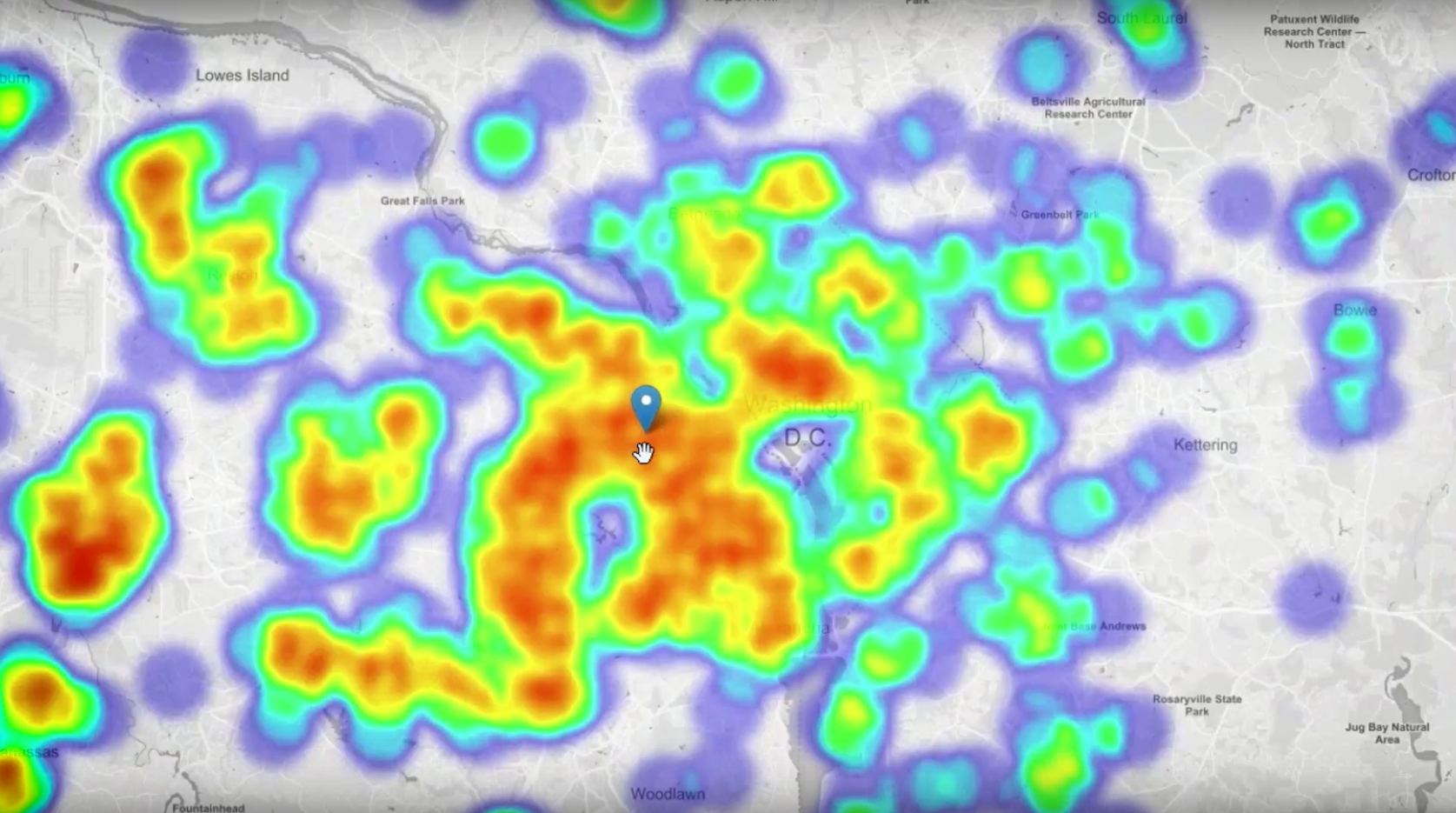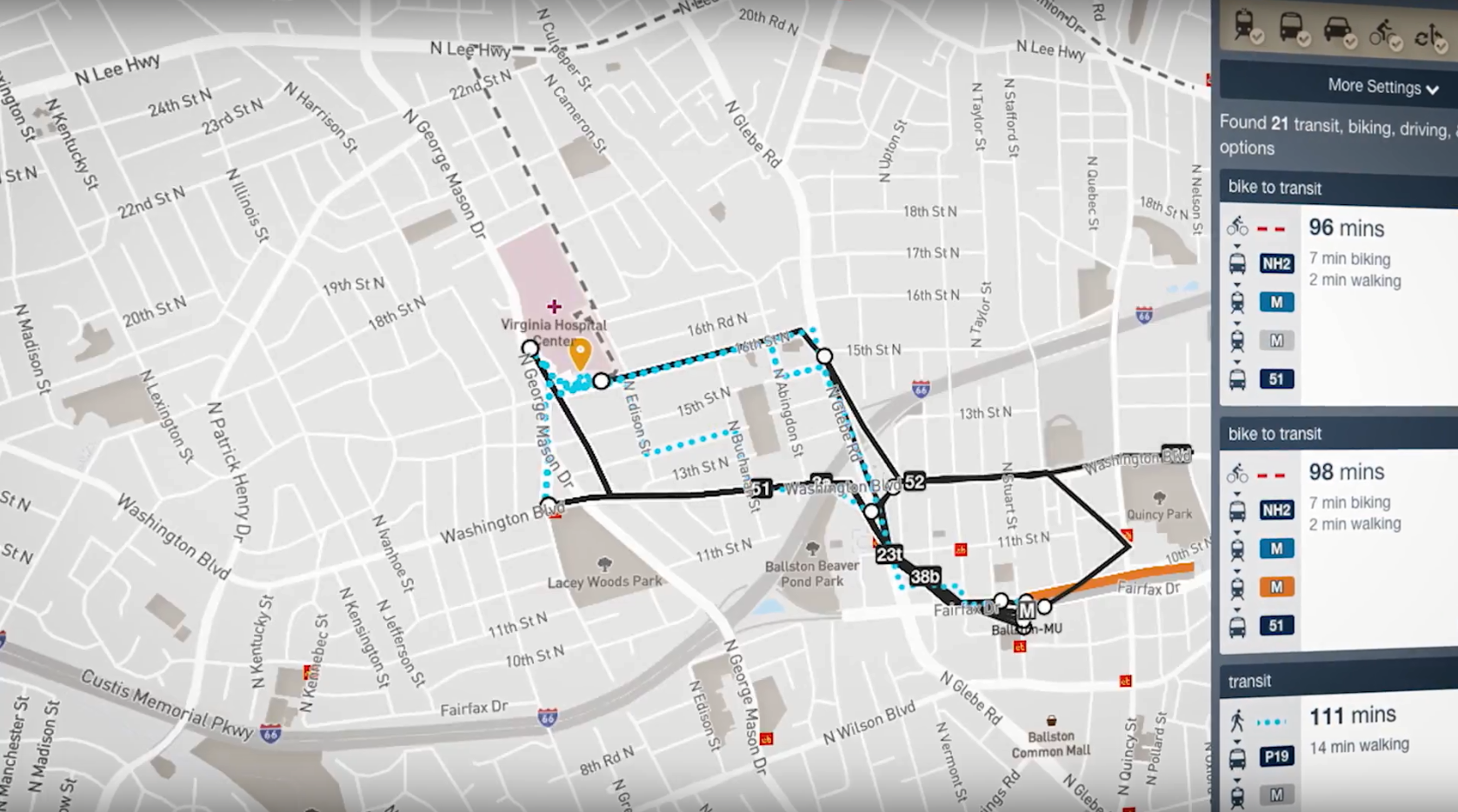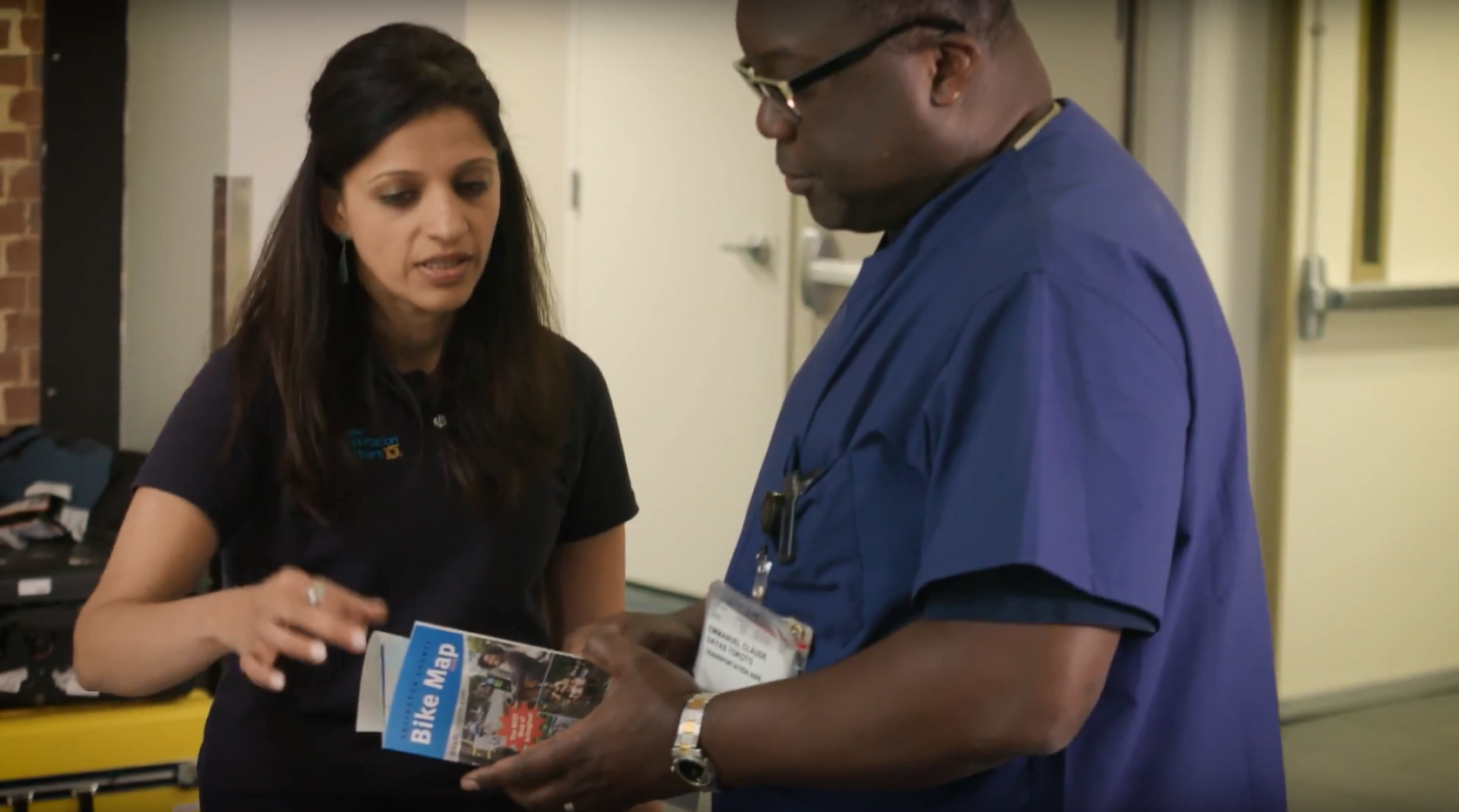
Share On Social!
Vehicles. Carpools. Bicycles. Public transit. Feet.
What’s the best way to commute to work?
For workers at Virginia Hospital Center in Arlington, new heat map technology is planning out their optimal commute route in hopes of saving people time and money─and increasing the use of multimodal transportation options that are good for health and the environment.
The new technology, Modeify, is being used by Arlington Transportation Partners and Mobility Lab to help hospital workers learn multimodal commute options they may not know about.
“Modeify makes it easy for commuters to see the health, financial, and environmental advantages of switching from driving their own car to sustainable transportation options,” according to Mobility Lab.
How Modeify Works

Modeify is a multimodal trip-planning and comparison tool.
It uses heat-map technology to pick the best commute for each commuter, from various combinations of rail, bus, walking, biking, and carpooling.
In Arlington, Modeify generated some shocking data for Virginia Hospital Center.
For example, they found that hundreds of employees could bike to the hospital in less than 30 minutes. They also found that 96% of employees lived within a mile of a potential carpool partner.
Why Modeify Is Needed
Transportation options can help reduce health disparities, climate change and isolation from education, employment, and other opportunities necessary to stay healthy and thrive.

Source: Mobility Lab
Latino areas often lack safe places to walk and bike, according to a Salud America! research review.
When such options exist, more Latinos walk or bike instead of drive (40%) than non-Latinos, according to a recent survey by the Yale Program on Climate Change Communication. More Latinos use public transportation or car pool (28%) than non-Latinos (22%), too.
Communities and planners can shift away from car-focused transportation.
“Traffic jams occur when demand for our infrastructure exceeds supply,” says Lois DeMeester, CEO of Mobility Lab. “Transportation demand management offers fiscally responsible programs that promote better use of our existing infrastructure.”
Fortunately, Arlington is a shining example.
Arlington as a National Model
Arlington’s population grew over 10% from 2006 to 2014.

Yet vehicle miles traveled declined by nearly 6% in that same span.
This is incredible because office space grew during this time, too, from about 6 million square feet in 1960 to 40 million in 2014. That made Arlington a greater employment center than downtown Dallas or Denver, according to Henry Grabar with Salon.
To give better reference point, in 2014, 55.3% of people who commuted to work in Arlington drove alone. This is much better than the 87.5% of solo commuters in Dallas and 70% in Denver.
Arlington’s success can be attributed to two things:
- Improved infrastructure supporting multimodal transportation, which can be attributed to land-use and transportation decisions dating back to the 1970s that aimed to increase density around Metro stops.
- Helping people use the infrastructure, which can be attributed to local collaborations and technology.
For example, Mobility Lab worked with Arlington Public School employees to ditch their car-based commute and embrace alternative commuting options to reduce traffic and school parking congestion.
Now Mobility Lab and Arlington Transportation Partners are using Modeify technology at the hospital.
“We are all about giving people different options,” said Pinky Advani of Arlington Transportation Partners.
Watch a video about how hospital employees are making “The Switch.”
Tell leaders in your community that you want to make “The Switch” because transportation options are important for health, equity, economic development, culture, and sustainability.
By The Numbers
142
Percent
Expected rise in Latino cancer cases in coming years



